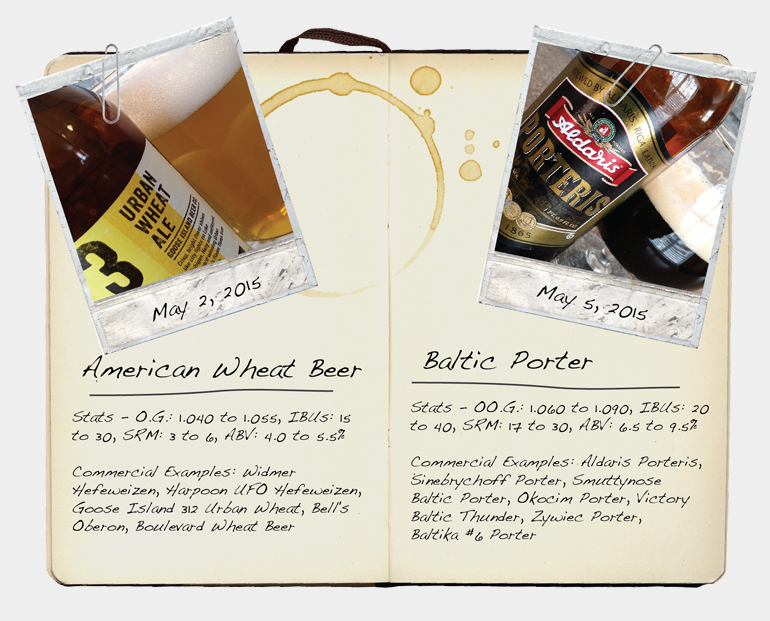Start 14-Day Trial Subscription
*No credit card required

American Wheat Beer and Baltic Porter
For this style, most brewers employ yeasts that produce a clean fermentation profile with moderate to light complex esters, and American ale yeasts or even lager strains may be utilized. Wheat malt should make up 30 to 50 percent of the grain bill, and hop choices often include varieties from America’s Pacific Northwest, Germany or New World strains such as Galaxy, Moteuka or Nelson Sauvin.
The nose of an American Wheat Beer should offer light to medium whole wheat bread dough notes with low to moderate fruity esters and malt sweetness balanced by a low to moderate citrusy, piney, floral and/or spicy hop presence.
Flavor notes follow suit, making for a highly drinkable and refreshing beer style. Light seafood dishes such as steamed clams, poached salmon, baked cod and boiled shrimp pair exceedingly well with crisp American Wheat Beers, as do summer salads that include acidic dressings, fruit and grilled meats like chicken breast or salmon. The style even complements light desserts such as blueberry tarts, sorbet, strawberry shortcake, peach cobbler and berry parfaits.
BALTIC PORTER
In the early 1800s, Europe was awash in Napoleonic wars, which curtailed the supply of high-gravity porters and stouts from England to the countries surrounding the Baltic Sea. Rather than do without the cherished strong ales during the tumultuous times, Baltic brewers took the opportunity to create versions of their own – often utilizing lager yeast strains used in local beer styles. The result became known as Baltic Porter.
Compared to Russian imperial stouts, the Baltic Porters offer more of a restrained roasted character and a smooth, full-bodied mouthfeel with rich, fruity esters and a complex malt makeup. The malt flavors are "reminiscent of an English Brown Porter and the restrained roast of a Schwarzbier," according to the Beer Judge Certification Program guidelines. Brewing with more malt, or a higher Original Gravity, and the resulting higher alcohol, adds to this strong European lager's singular character.
While many versions of the style are fermented with cold-loving European lager yeast strains, a few examples are produced from ale yeasts - with a slow, cool, primary fermentation being followed by a period of cold conditioning to smooth out the fruity ale esters.
Usually not jet-black in appearance, Baltic Porters often possess amber, ruby or dark brown highlights, with most versions being somewhat clear when held to the light. Extremely dark versions can come across as opaque. The style should be poured in a glass spacious enough to support a thick, creamy layer of tan foam.



